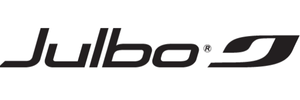


One Lens. Every Condition.
Photochromic Lens Technology:
Photochromic lenses adjust to changing light conditions, getting lighter or darker depending on the amount of UV light present. The more UV light, the darker the lens becomes, and vice versa. Photochromic technology is often applied as a chemical laminate to a lens's exterior, but in the case of Julbo’s REACTIV lenses, it is sandwiched into the material, allowing these lenses have the widest photochromic range and fastest reaction time of any photochromic lenses.

Stop Swapping Lenses
REACTIV Photochromic Technology:
REACTIV photochromic lenses are Julbo's proprietary lens technology. They adjust to changing light conditions and provide clear vision for every situation. With the widest range and fastest reaction time on the market, REACTIV technology leads the industry in performance photochromic eyewear.

The Secret to Seeing Everything.
Visible Light Transmission
This refers to the percentage of light that filters through a lens—the higher the number, the more light passes through. A window in a home, for example, might have a VLT of around 70%, allowing most visible light to pass through while filtering enough to keep your sofa from getting bleached. A typical sunglass lens, like a home’s window, has a fixed VLT. The VLT of Julbo’s REACTIV lenses, on the other hand, changes as ambient light changes. Regardless of VLT, Julbo’s sunglasses lenses provide 100% protection from harmful UVA, B, and C light.

From Helicopters To Your Eyewear
Trivex
First developed for use by the military in helicopter windshields and fighter jet windshields, Trivex was tailored for optical lenses in 2002, at which point it became one of the most lightweight and impact-resistant lens materials available. All Julbo REACTIV Photochromic lenses are made from Trivex.
Trivex lenses exceed the FDA minimum impact standard for street/dress eyewear by a factor of 60 times and provide 100 percent protection from the sun's harmful UV rays. The cast molding process used to make Trivex lenses mimics how most other plastic and high-index plastic lenses are made: a liquid monomer is poured into molds and hardened in heated ovens. Unlike the injection molding process used with polycarbonate lenses, this slower cast molding process results in sharper optical quality.

The fastest lens swap available
MagneFix Interchangeable Lens System:
This exclusive magnetic attachment system, utilized on the Julbo Edge, features a magnet on the bridge of the sunglass frame and lens, allowing for quick and easy lens changes.

Big Performance. Small Price Tag.
Spectron Lenses
Not every adventure calls for a premium photochromic lens — and that’s where Spectron shines. Built for value, durability, and everyday performance, Julbo Spectron lenses deliver crystal-clear vision and reliable protection for mountain days, road trips, and everything in between.
Made from lightweight, impact-resistant polycarbonate, Spectron lenses deliver durable, all-day comfort and reliable performance at an accessible price.
All Day Comfort
Airlink Temples
Julbo’s proprietary Air Link Temples reduce bounce while increasing comfort. The arms of the sunglasses have a length of suspended rubber running along the bottom, which acts as a mini shock absorber during activity.
From Glaciers to Gasherbrum
Alti Arc Mineral Lenses
Alti Arc lenses are made of mineral glass and utilized in Julbo’s mountaineering eyewear—they’re the only mineral glass lenses that Julbo offers. They provide excellent scratch resistance and superior optical quality, which sets an industry benchmark for glacier glasses. An external anti-reflective coating improves visual comfort by eliminating stray reflections, and a flash finish improves the filtration of visible light by applying a mirror effect to the lens. Mineral lenses are more fragile than polycarbonate or Trivex lenses and can shatter if dropped. They’re slightly heavier than polycarbonate or Trivex lenses, too.

Always Fog Free
Anti-Fog Coating
This permanent coating is applied to the interior of Julbo’s REACTIV Photochromic lenses.It’s chemically bonded to the lens, working on a molecular level to prevent water molecules from bunching together and forming fog. The result is best-in-class fog prevention, no matter the conditions or your effort. When wiping with a microfiber cloth, you may notice the inside of the lens is slightly tacky—this is the anti-fog coating. It won’t rub off, meaning the best way to clean your lenses is with soap and water.
Customize Your Fit
CustomFit Temples
These thin and lightweight temple arms have a metal core that allows them to bend, enabling a customized fit. CustomFit Temples are covered in Grip Tech rubber for a soft and grippy finish.

Sharp Look. Smooth Contours.
Cylindrical Lenses
Unlike spherical lenses, which curve vertically and laterally, cylindrical lenses curve just laterally. Imagine if the lenses were cut from a cylinder, wrapping side to side. Julbo’s Fury and Density are examples of sunglasses with cylindrical lenses.

A Flash of Color Exactly When You Want It.
Flash Finish
Lenses with a flash finish are either colored or treated with a colorful mirror treatment that will only be visible from certain angles or at certain light levels. This type of finish is a staple of eyewear and provides a touch of style while filtering light.
Bye, Glare. Hi, Clarity.
Glare Control
Julbo’s Glare Control lenses are about 80% polarized. This partial polarization eliminates glare off reflective surfaces (such as snow, ice, or water), while allowing for unobstructed viewing of electronics, like a phone screen or boat navigation system.
Why Yes, the World is Supposed to Look That Sharp.
High Contrast
Lenses with a high contrast label have a “warm” base color in the brown/red/rose family. A high contrast lens enhances detail both close up and farther away better than a gray base lens. A high contrast lens is especially good on snow.
The Starting Line for Better Sight.
Lens Base Color
This is the color of the lens material when it is initially molded. In general, a gray base color offers a neutral tone with no color enhancement, making it ideal for people who like a standard tint to their sunglasses. Brown, rose, and violet base colors all offer enhancement, which tends to make colors ‘pop,’ increase contrast, or reduce eye fatigue in bright conditions.
Choose Your Fighter: The Lens Edition.
Lens Categories
Sunglass lenses are rated on a 0-4 scale, and the number corresponds to the visible light transmission (VLT)—the higher the VLT, the lower the category.
Category 0 is the lightest lens—virtually clear and best for dark conditions. Category 4 is meant for the brightest and highest exposure conditions, and frames with Category 4 lenses include side shields. Most everyday sunglass lenses are Category 3. Julbo’s lenses use this category naming convention. For instance, a REACTIV 0-3 lens will span categories 0-3.
Category 0: 80-100% VLT (Clearest Lens)
Category 1: 43-80% VLT
Category 2: 18-43% VLT
Category 3: 8-18% VLT
Category 4: 3-8% VLT (Darkest Lens)
Turn the light up to 11
Light Amplifier Lens
Lenses with the Light Amplifier name brighten your surroundings thanks to their yellow or light orange base. This helps enhance ambient light, making them especially good for use at sunrise/sunset or when traveling in and out of shadows.

Block the Sun. Blind the Haters.
Lens Mirror Coating
This reflective optical coating applied to the outside of the lenses makes them look like small mirrors. Mirror coatings decrease the amount of light passing through the lens by a 10-60%, making them especially useful in bright conditions. The color of a mirror coating is aesthetic only and does not affect the lens base color or the color the wearer sees.

Block Glare
Polarization
Polarization reduces or eliminates glare, easing eye strain during long days outside and increasing visual contrast, comfort and clarity. It allows light necessary for vision to pass through and blocks reflections that interfere with vision.
Polarization operates on the same principle as Venetian blinds, filtering light along a single axis. Direct light and reflected light hit your eye along different axes. In sunglasses, the polarization pattern filters light traveling along a horizontal axis, providing the most effective protection from surface glare off water, snow, and windshields.
Julbo’s polarizing treatment comes in two forms: a thin chemical laminate that’s applied to the surface of the lens and a unique chemical laminate that’s sandwiched within the lens.
The first form—the laminate used with polycarbonate lenses (Polarized Spectron 3)—is lighter and more affordable but can become scratched off over time. The latter form—used in our REACTIV lenses—protects the polarizing film from scratching and, depending on the thickness of the laminate, can provide more glare protection and higher optical quality
Built to Take a Hit, Not Take Your Money.
Polycarbonate Lens
First used in sunglasses in the 1980s, polycarbonate lenses are impact resistant, lightweight and UV protective. Thanks to those features, polycarbonate is a popular material for lenses in performance and kid’s sunglasses. Polycarbonate lacks the optical quality of mineral glass or Trivex and is not as durable or scratch resistant as Trivex. It is, however, more scratch resistant and has better optical quality than acetate.

Hugs Your Nose. Doesn’t Judge It.
3D Nose
Julbo’s proprietary 3D Nose is a fully adjustable nose bridge. The nosepiece features a metal core that can be bent and will retain its shape for a custom fit; it’s covered in Grip Tech rubber so it will stay put even in the presence of sweat and sunscreen.
Continue Reading

Mountain Rituals
All of us in mountain life have our own tried-and-true rituals and traditions. Here’s what the Julbo crew has to offer.

Winter 25/26 Goggle Buyers Guide
Finding the right goggles can make or break your day on the mountain — and Julbo’s 25/26 lineup is built to deliver clarity, comfort, and confidence in every condition. Whether...

Edge Cover Sunglasses Review
Julbo has been making intention-built high mountain glasses for more than 130 years, and the Edge Cover Reactive is on the edge of their constant innovation. While the Edge was...




